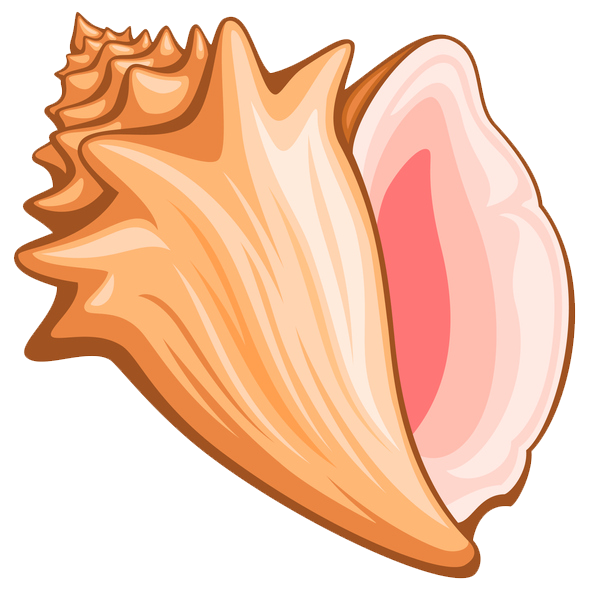In our recent episode, The Phantom, The Genie & The Scribe, we look at the new wizard subclass that specializes in spellbooks. But did you know that your wizard's spellbook doesn't have to be a book? This was the idea presented in Xanathar’s Guide to Everything, Spellbooks: https://www.dndbeyond.com/sources/xgte/subclasses#Spellbook
“Your wizard character’s most prized possession — your spellbook — might be an innocuous-looking volume whose covers show no hint of what’s inside. Or you might display some flair, as many wizards do, by carrying a spellbook of an unusual sort. If you don’t own such an item already, one of your goals might be to find a spellbook that sets you apart by its appearance or its means of manufacture.”
Some of the suggestions that come from Xanathar:
- A tome with pages that are thin sheets of metal, spells etched into them with acid
- Long straps of leather on which spells are written, wrapped around a staff for ease of transport
- A battered tome filled with pictographs that only you can understand
- Small stones inscribed with spells and kept in a cloth bag
- A scorched book, ravaged by dragon fire, with the script of your spells barely visible on its pages
- A tome full of black pages whose writing is visible only in dim light or darkness

How I've Learned To Ditch the Book
In an Ebberon camapign, I play a weird wizard. He's an old School of Invention build (which is no longer available on DndBeyond). He's an "arcanomech", a wizard in a suit of armor that he uses to cast his spells, which actually fits in with our game beautifully. He's similar but different from our Artificer Battlemaster, and our Bladesinger. Yes, we have a lot of wizardy types, but it is Eberron, so that's fine. They all have fighter like qualities, and we have a Warforged Gunslinger too.
Our party has an airship, and his talents make him the ship's chief engineer. He's also the cartographer. He has a magic Cartographer’s Case, like those found in Acquisition Incorporated. This is also his spellbook.
Within that case, he keeps not just maps, but also all of his many, many blueprints. His spells are all laid out like blueprints for systems of his arcanomech armor. We've also used the blueprint gimick to craft an new magical rifle for our crew's gunslinger. Once I started to roleplay the blueprints thing, they just started to come up in game play more and more, with the whole party referencing them. That's how his unusual spellbook has become a character in the game. It's fun and fits our setting -- which is an important part of character design.
5 Crazy Spellbook Ideas You Can Steal (Also the tag on the Header image)
So here are a few more ideas to get you thinking outside the book, but make sure you discuss with your DM how to make your zanny spellbook work within the setting and story.
Keep in mind, if you play a “Scribe”, your “spellbook” becomes your casting focus…which provides a cool opportunity to do some very unique casting. Also, the Order of the Scribe gets to summon a “Wizardly Quill”; this doesn’t have to be a quill if your spellbook isn’t a book. Each of the following describe what else it could be:
1. Arcane Kaleidoscope: a telescoping tube with a eye hole at one end, while the opposite end turns, tumbling the magical sands inside against the magic mirro to reveal the arcane patterns of the weave.
- Preparing Spells: Ss it is spun, the shapes an patterns reveal the arcane symmetry of each spell you wish to prepare. You take time gazing deep into and beyond the patterns.
- As a Casting Focus: When possible, the spell eminates from the end of the scope. This could be wand style, or for spells that target creatures, maybe you hold it up to your eye to cast at them.
- Adding New Spells: Adding spells to the Kaleidoscope is just as painstaking as writing in any book. You must proceed slowly, carefully pouring in new sacred sands in just the right combination, adjusting the mirrors, etc. For a Scribe, this only takes half as long as most wizards take to copy a spell. Gold cost for arcane sands, for a scribe, are half that of what a wizard would normally pay to copy a spell.
- The Wizardly Quill: Bag of multi-colored sand. Can be used to draw symbols on the ground, or flat surfaces. Sand can be sucked back into the bag if within 5’.
2. Mystic Rosary: A long string of pearls, each etched with an arcane glyph.
- Preparing Spells: You thumb each one as you work your hand along the string, the way a nun might move rosary beads during prayer.
- As a Casting Focus: The pearls could be wrapped in your hand, or around your neck. Perhaps they glow slightly as you cast. Flavor this as it fits your character.
- Adding new Spells: Your Arcane rosary could be worn first as a bracelet, but then as necklace as you add more and more spells to it, and gets longer and longer. For a Scribe, engraving the glyphs, drilling the holes and adding to the string of pearls only takes half as long as most wizards take to copy a spell. Gold cost for pearls, for a scribe, are half that of what a wizard would normally pay to copy a spell.
- The Wizardly Quill: Engraving tool. You can etch into very hard surfaces, like metal and stone. These markings can be dismissed with a wave of your engraving tool if within 5'.

3. A Conque Shell: a large shell that you can hold to your ear and hear the sound of the sea -- or in the Scribe's ear, the sound of the weave.
- Preparing Spells: You hold the shell to your ear, close your eyes, and listen to the arcane sounds of the sea of the weave crashing upon the shores of forgotten realities. As you listen closely your mind fills with the spells you wish to prepare.
- As a Casting Focus: For some spells you could blow into for the verbal component, other spells might make more sense if you held it to your ear to receive information.
- Adding Spell: To store spells in it the shell, you must send "magic winds" to the shores of the weave. This involves inhaling expensive insense, then slowly blow the magic words of the spell into the shell. For a Scribe, the gold cost of the insense is only half the normal spell cost, and the time it takes to blow the spells in is half the normal time it takes to copy a spell
- Wizardly quill: So where to we get the smoke? Maybe a pipe or other smoking apparatus. Maybe a tiny braiser, censet or thurible. You can also use this to create small smoke signals, that linger in the air. They would not only disappear with a wave of your apparatus, but likely also be dismissed by any breeze. This one definitely is out of the box, so be careful not to give it any more power than the original Wizardly Quill would have.
4. Lots of Little Artistic Knots: Call it what you will -- a Tapestry, a crochet blanket, a macrame belt, a knitted scarf -- anything that uses thread, string, yard, etc that you can keep adding to. Each of your little weaves, knots, and stitches becoming a symbol within the arcane pattern of the spell. Weaving the weave.
- Preparing Spells: You lay upon, or wrap yourself in your series of little arty knots, running your hands across the patterns, tracing the intricate nots, and percieving the arcane knowledge held within them.
- As a Casting Focus:
- Adding Spells: The Scribe buys their string, yarn, thread for half the gold cost a spell would normally cost, and spends half the normal time adding that material to their "spellbook" that a spell would normally take. If this were a scarf, a 20th level Scribe would have an enormous long wrap looped about them.
- Wizardly Quill: a tiny loom, a crochet hook, knitting needles. Can be used to mend clothing, or perhaps to stitch words into fabric, like a monogram. Anything stitched by the apparatus can be undone by the wave of the implement if within 5'.
5. Tattoos on Your Skin: While there are already some new UA rules for tattoos in the game, you could take this further with this subclass, etching
- Preparing Spells: You must disrobe and spend time studying the intricate patterns that criss-cross your body.
- As a Casting Focus: You are your spellbook. The good news is that should anyone remove your skin, according to the rules you can re-tattoo yourself with a short rest. Also keep in mind that the Scribe's spellbook gains a short of sentience. If your skin is the book, you might feel like it is crawling or bristling as it has a mind of its own.
- Adding Spells: As a scribe, you need tattoo ink worth half what normal spell would cost, and it takes half the noraml time to hammer it into your skin (and yes, it really, really hurts)
- Wizardly Quill: A tattooing needle on a stick (you tap this repeatedly on the skin to imbed the ink). You can also do non-magical tattoos for anyone, and the dismiss them with a wave of your tattooing stick within 5'.
These are in no way fully formed "spellbooks", merely starting points for you and your DM to make a cool and unusual scribe for your collaborative storytelling.
(Credit: Header Image by Akreon on Deviant Art)
